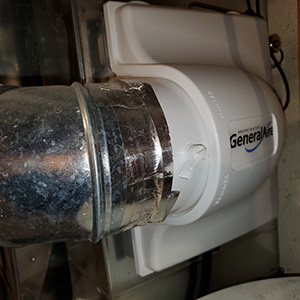A whole-house humidifier, which is also referred to as a central humidifier is connected to the home’s hot air ducts and cold air return. The central humidifier can either work alongside the heating/cooling system, or independent of it. This system works by water accumulating inside of a collection tray. When the air passes through the heating/cooling ducts it will pick up the moisture as it passes through the tray area, it will then cycle through the furnace and then through the duct system where the moisture laden air will be distributed throughout the home.
A central humidifier can help lower your families’ chances of catching colds, flues and respiratory illnesses. As well, having a higher humidity level in your home can allow for you to set a lower thermostat level, helping cut costs on your heating bill every month.
Central Humidifier types:
Bypass Humidifiers
Bypass humidifiers add moisture to warm air via a furnace. These types of humidifiers take warm air from the home’s heating ducts and pass it through a water tray. This allows the air to collect moisture which is then delivered back into the house. You can have a bypass humidifier installed on the supply or return plenum of your central air system. Bypass humidifiers typically need to drain their water supply, however, if you don’t have a floor drain, you can always have a drainless bypass humidifier installed. These reuse their water supply, meaning that they use less water.
Steam Humidifiers
Steam humidifiers work by using electricity to boil water in order to create humidity in the form of steam. The steam is then picked up and pushed throughout the ventilation system. Steam humidifiers are the fastest and most efficient way to increase and maintain a good level of humidity in your home. Steam whole-house humidifiers also provide the purest and most natural form of humidity that you can have within your home. Steam humidifiers are able to run moisture regardless of the condition of your heating/cooling system.

